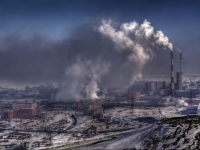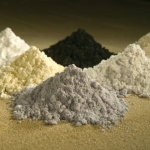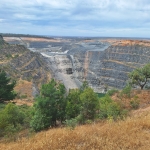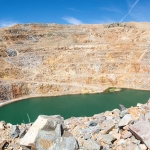Norilsk Nickel Devastates Arctic Communities

Photo: Plyotka. Used under Creative Commons license.
Over 400 kilometers north of the Arctic Circle in the Krasnoyarsk Krai region of Siberia is the town of Norilsk, population 170,000. Developed in the 1930s by the then-Soviet Union, it is one of the coldest as well as one of most most polluted places in the world.
This is because of the activities of one company - Norilsk Nickel. For the last nine decades, the company’s sprawling smelter complex, built by forced labor from Stalin’s gulags, has been one of the largest producers of high-grade nickel as well as cobalt, copper, palladium and platinum, and has belched out toxins that have killed off 5.9 million acres of boreal (Arctic) forests in a 100 kilometer radius.
Data gathered by NASA, the U.S. space agency, estimates that Norilsk emitted 1.9 million tons of sulphur dioxide a year for much of the first two decades of this century - the same amount as all U.S. annual sulphur emissions from all sources over the same time period.
“We can see that the trees near Norilsk started to die off massively in the 1960s due to rising pollution levels,” Ulf Büntgen, a professor from Cambridge’s Department of Geography, was quoted saying in a university article. “What surprised us is just how widespread the effects of industrial pollution are - the scale of the damage shows just how vulnerable and sensitive the boreal forest is. Given the ecological importance of this biome, the pollution levels across the high-northern latitudes could have an enormous impact on the entire global carbon cycle.”
In the first quarter of 2021, the Russian Ministry of Natural Resources reported that Norilsk Nickel dumped waste into local waterways that contained 989 tons of nickel (100 times the legal limit), 3,998 tons of iron (45 times the legal limit) and 32,318 tons of cobalt (four times the legal limit). Not surprisingly, rates of cancer and blood illnesses are as much as double that of the rest of Russia.
"In the winter, the snow is also red," Evgeny Belikov, a former nickel worker, told ABC News. "On the one hand, it's beautiful, but on the other it's chemical."
The biggest impact has been on the Nganasan native community whose ancestors have lived in the region for centuries taking care of their reindeer herds and catching fish.
“You cannot breathe there, and I was coughing all the way on the drive home,” Valeriya Bolgova, a leader of the Nganasan peoples who lives close to the plant, told Inside Climate News. “This all happens due to the emissions from Norilsk Nickel.”
The pollution has also dramatically impacted the reindeer, which have reduced the amount of time they spend in the region from some 180 days a year to just 63 days, according to a study published in 2020 by the Siberian Federal University.
On May 29, 2020, a storage tank at Power Plant No. 3 collapsed, flooding the nearby Daldykan River with over 20,000 tonnes of diesel and turning it blood red. Investigators would later conclude that the collapse was probably a result of unprecedented warm weather that caused the supports holding up the tank to sink. The oil drifted north into Lake Pyasino, which flows into the Kara Sea in the Arctic Ocean. All told, it contaminated 350 square kilometers of land.
“It looked horrible when we got there and it wasn’t even the worst of it as a couple of hours had passed,” Vasily Ryabinin, a whistleblower who quit his job with Rosprirodnadzor, the state environmental agency, told CNN. “You could smell the diesel half a kilometer away… my boss was even afraid to smoke there in case it blew up.”
"No one even mentioned what’s under the (oil) film. State TV kept showing the spill saying there is allegedly nothing under it and it’s just on the surface,” Georgy Kavanosyan, a local environmentalist, told CNN. “And under this layer, hydrocarbons dissolve and infiltrate all life — fish, roe, mud, everything.”
A 17 day research study led by the All-Russian Research Institute of Fisheries and Oceanography in Moscow found that the pollution in the liver and muscles of fish were no longer safe to eat. Some 900 kilometers of the Pyasino River, all the way to the Arctic Ocean, were found to have been contaminated.
Just a month after the diesel spill, independent newspaper Novaya Gazeta exposed company staff for dumping wastewater into nearby Arctic tundra.
A year after the spill, the company agreed to pay a $2 billion fine. The company also promised to spend another $5 billion cleaning up the region.
“We do acknowledge that there are legacy issues relating to our business,” a company spokesman told Inside Climate News. “We are implementing far-reaching measures to address them,” he said.
But two years after the spill, Indigenous activists in the local communities continued to report being harassed after speaking out against Norilsk Nickel.



